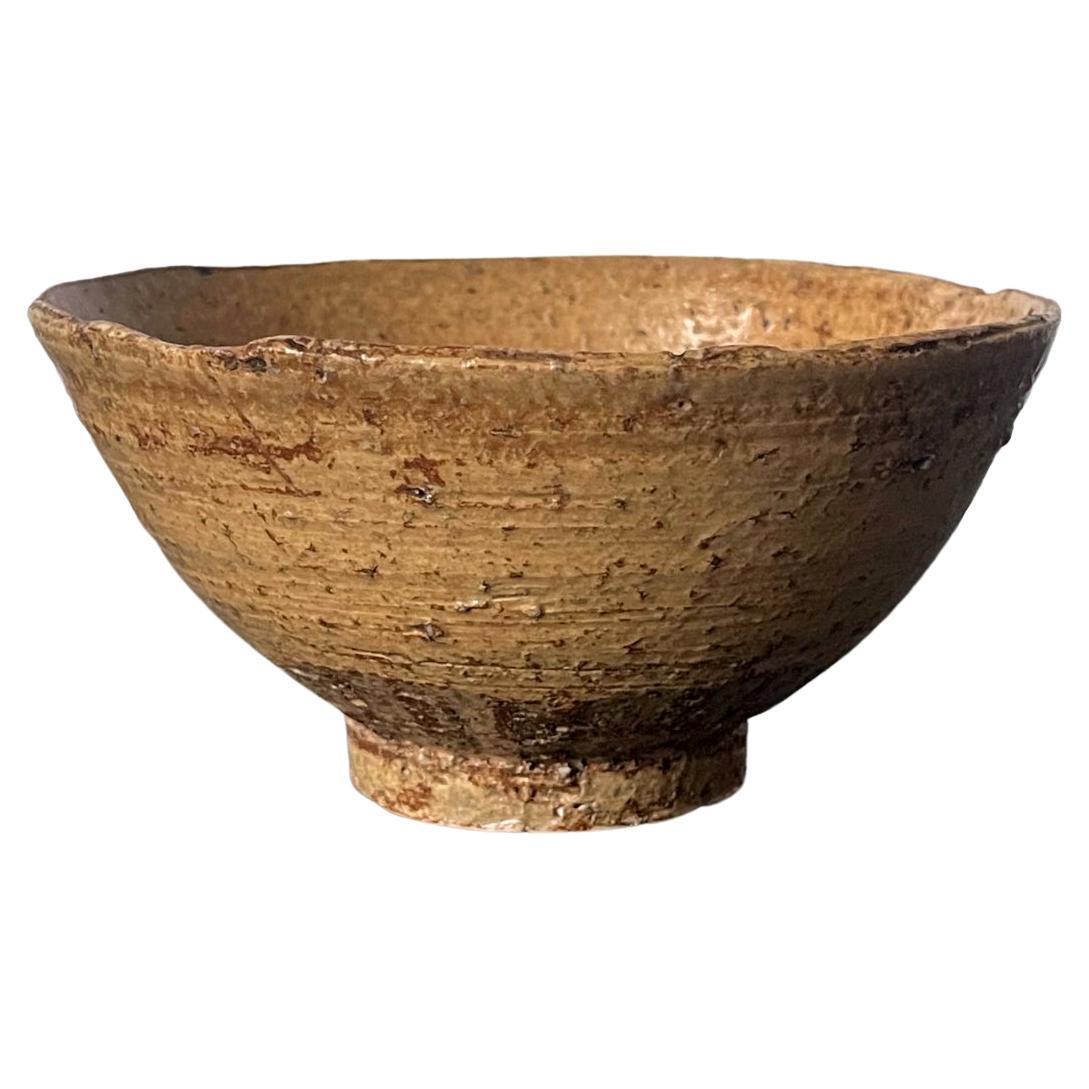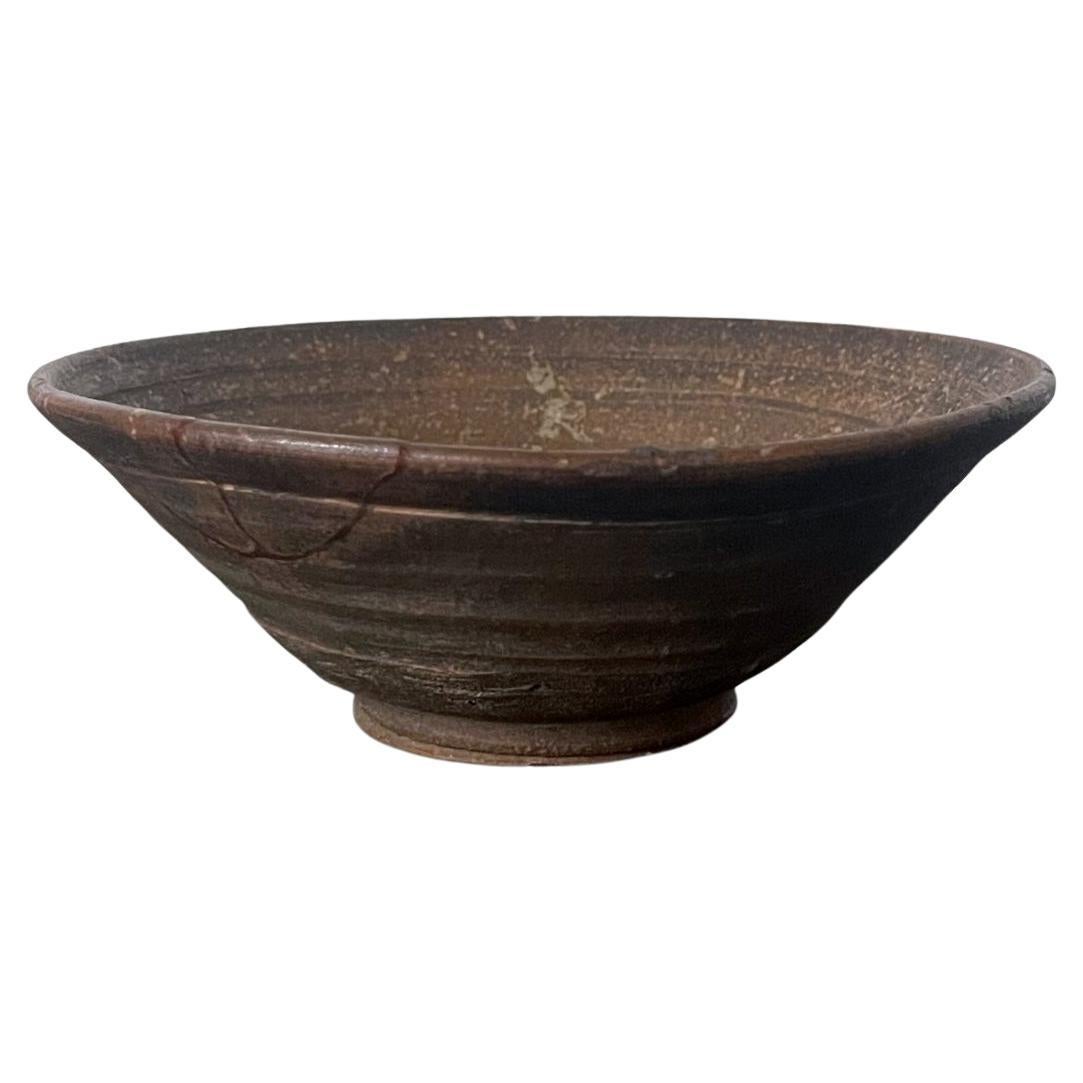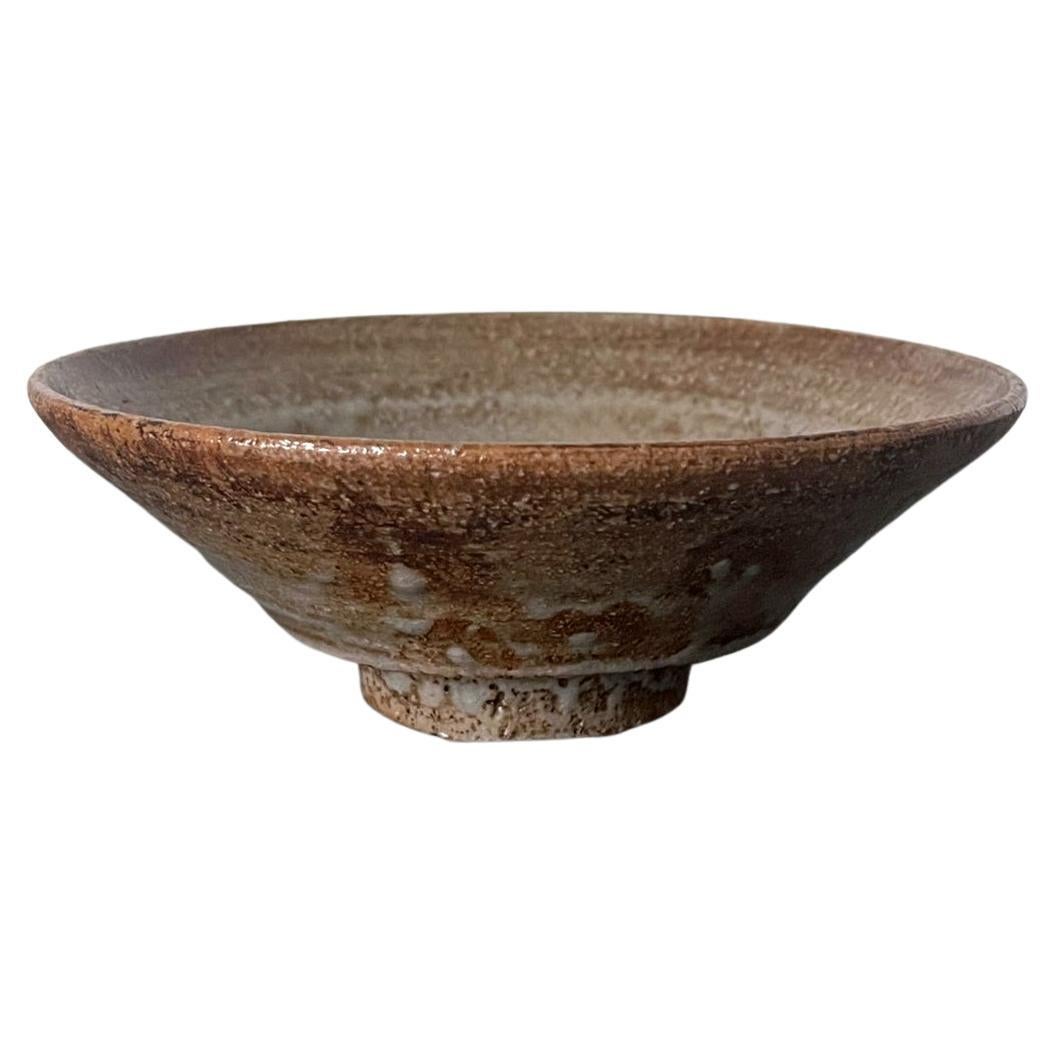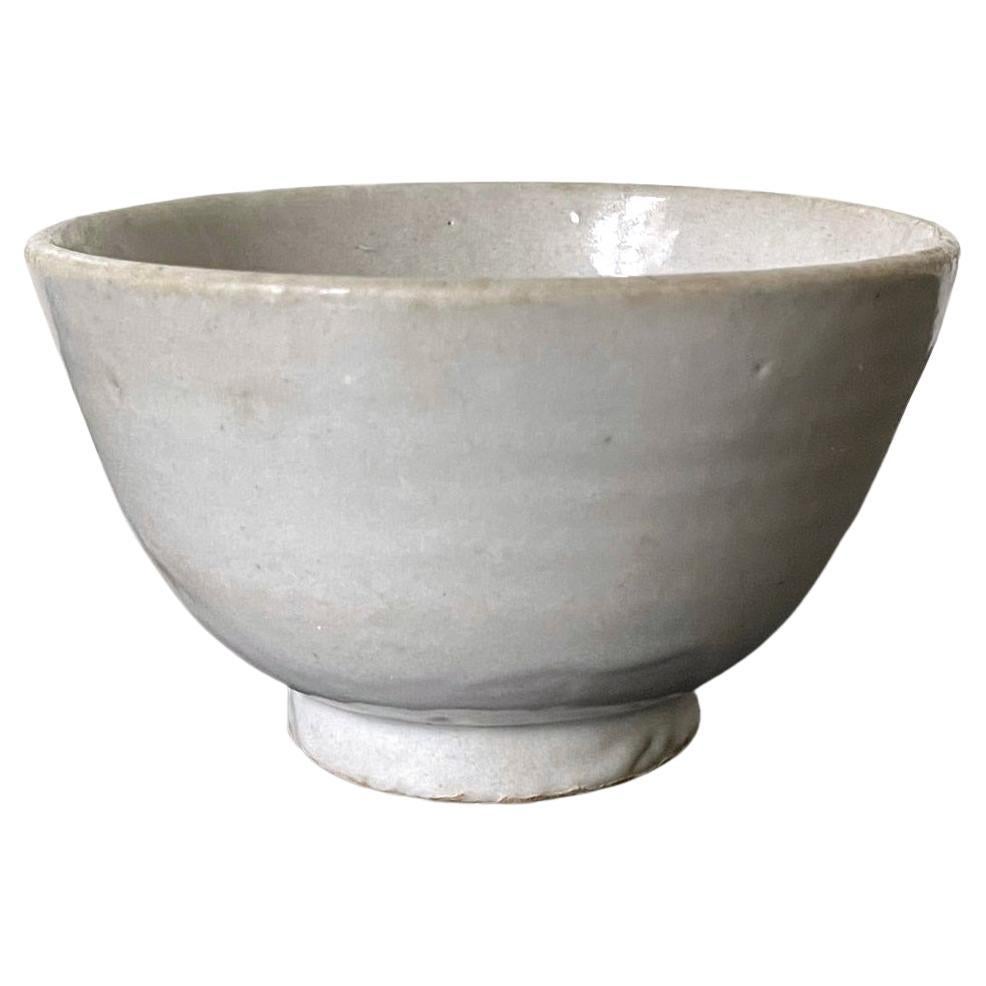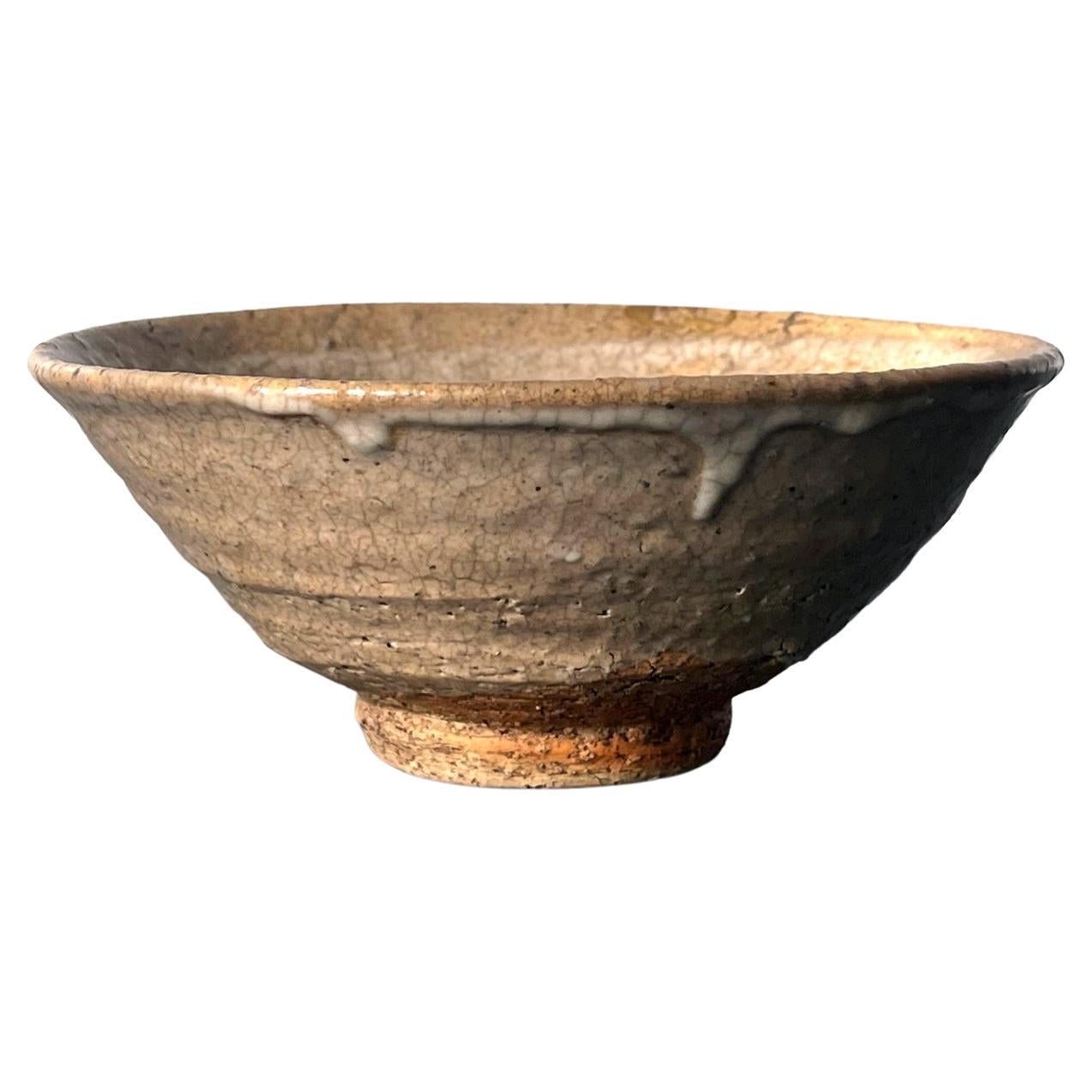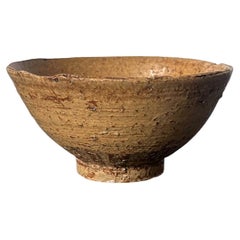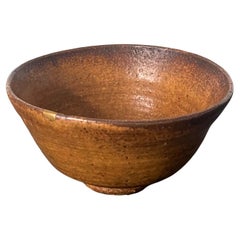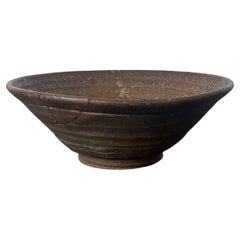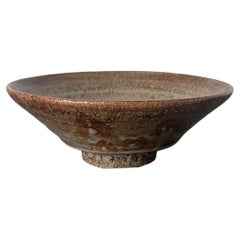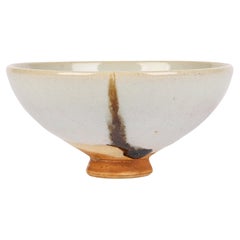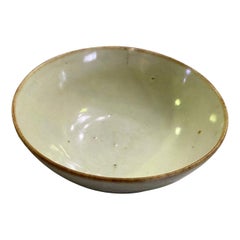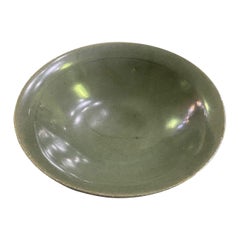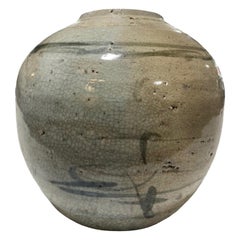Items Similar to Antique Korean Ceramic Komogai Chawan with Tamagode Glaze
Want more images or videos?
Request additional images or videos from the seller
1 of 15
Antique Korean Ceramic Komogai Chawan with Tamagode Glaze
$4,500
£3,414.50
€3,904.17
CA$6,285.28
A$6,988.38
CHF 3,648.94
MX$85,065.55
NOK 46,558.94
SEK 43,623.50
DKK 29,137.55
Shipping
Retrieving quote...The 1stDibs Promise:
Authenticity Guarantee,
Money-Back Guarantee,
24-Hour Cancellation
About the Item
A ceramic tea bowl with milky white glaze made in Korea for Japanese market circa 16-17th century.
The thinly potted bowl is in the shape called Hatazori-gata (curving-lip type) that is known as Komogai (or Kumagawa) type. It was named after the historical port of Komogai, close to Bushan in Gyongsangnam-do, southern coast of Korea, where these bowls were traded and exported to Japan in the 16-17th century. The white glaze that covers nearly the entire surface resembles the color and texture of eggshell, therefore is known as Tamago-de. This type of glaze is rather rare, and few examples exist. It was believed that the Tamago-de glaze was only made in Korea from late 16th to mid-17th century during Japan's Edo period.
The tea bowl on offer bears typical characteristic of Tamago-de glaze. The smooth milky color glaze shows a fine crackle with scattered spots of flakes exposing the dark clay underneath. The glaze on the rim was largely worn off, so was on the base. There is a subtle indentation on the bottom of the interior known as kagami (tea pool). The ring base is relatively thick compared to the base and trimmed by the potter's knife. It appears delicate to the eyes, but it feels strong in the hands.
The bowl comes with a fabric pouch (Shifuku) and a tomobako box of a later period.
See a Tamago-de tea bowl named ‘Tamatsubaki’ in the collection of MOA (Musuem of Art, Atami, Japan). It has a slightly different shape.
For three Komogai-nari shaped tea bowls with various glaze, see G-5328, TG-2 and TG-2712 in the collection of Tokyo National Museum.
- Dimensions:Height: 2.85 in (7.24 cm)Diameter: 5.2 in (13.21 cm)
- Style:Other (Of the Period)
- Materials and Techniques:Ceramic,Glazed
- Place of Origin:
- Period:
- Date of Manufacture:16th-17th Century
- Condition:Wear consistent with age and use. Minor losses. Glaze flakes as shown. All historical and stable. Tomobako has wear.
- Seller Location:Atlanta, GA
- Reference Number:1stDibs: LU945031622432
About the Seller
4.9
Platinum Seller
Premium sellers with a 4.7+ rating and 24-hour response times
Established in 2006
1stDibs seller since 2010
564 sales on 1stDibs
Typical response time: <1 hour
- ShippingRetrieving quote...Shipping from: Atlanta, GA
- Return Policy
Authenticity Guarantee
In the unlikely event there’s an issue with an item’s authenticity, contact us within 1 year for a full refund. DetailsMoney-Back Guarantee
If your item is not as described, is damaged in transit, or does not arrive, contact us within 7 days for a full refund. Details24-Hour Cancellation
You have a 24-hour grace period in which to reconsider your purchase, with no questions asked.Vetted Professional Sellers
Our world-class sellers must adhere to strict standards for service and quality, maintaining the integrity of our listings.Price-Match Guarantee
If you find that a seller listed the same item for a lower price elsewhere, we’ll match it.Trusted Global Delivery
Our best-in-class carrier network provides specialized shipping options worldwide, including custom delivery.More From This Seller
View AllKorean Ceramic Ki-Irabo Tea Bowl Chawan Joseon Dynasty
Located in Atlanta, GA
A ceramic chawan tea bowl made in Korea for Japanese market circa 17th century. The chawan is identified as Ki- Irabo type (Yellow Irabo). Irabo bowls w...
Category
Antique 17th Century Korean Other Ceramics
Materials
Ceramic
Korean Ceramic Irabo Tea Bowl Chawan Joseon Dynasty
Located in Atlanta, GA
A ceramic chawan tea bowl made in Korea for Japanese market circa 17th century. The chawan is identified as Irabo type. Irabo bowls were essentially con...
Category
Antique 17th Century Korean Other Ceramics
Materials
Ceramic
Korean Ceramic Kakinoheta Chawan Tea Bowl
Located in Atlanta, GA
A "Kakinoheta" type ceramic chawan (tea bowl) made in Korean during Joseon dynasty circa 16th-17th century. The bowl has a slight irregular flat shape w...
Category
Antique 17th Century Korean Other Ceramics
Materials
Ceramic
Korean Ceramic Chawan Ido Tea Bowl with Soba Glaze Kuroda Touen
Located in Atlanta, GA
This ceramic chawan (tea bowl) was made in Korea during Joseon dynasty circa 18th to early 19th century. The bowl was of a "Small Ido" form with half-he...
Category
Antique Late 18th Century Korean Other Ceramics
Materials
Ceramic
Antique Korean Ceramic White Bowl Joseon Dynasty
Located in Atlanta, GA
A Korean ceramic rice bowl covered in a white glaze with a hint of bluish green color circa 19th century toward the end of Joseon Dynasty. The deep bowl...
Category
Antique 19th Century Korean Other Ceramics
Materials
Ceramic
Korean Ceramic Ido Tea Bowl Chawan Joseon Dynasty
Located in Atlanta, GA
A ceramic stoneware chawan tea bowl made in Korea circa 16-17th century. The chawan is identified as Ko-ido (small ido) due to its size and form. Ido bowls were made since 15th centu...
Category
Antique 17th Century Korean Other Ceramics
Materials
Ceramic
You May Also Like
Chinese Jun Ware Streak Glazed Art Pottery Bowl
Located in Bishop's Stortford, Hertfordshire
A very stylish good quality Chinese Jun Ware pottery bowl decorated with streaked glazes on a red and pale blue glazed ground dating from the latter 19th o...
Category
Antique 19th Century Chinese Other Ceramics
Materials
Pottery
Korean Joseon Dynasty Glazed Pottery Ceramic Hakame Chawan Tea Bowl
Located in Studio City, CA
A wonderful Joseon Dynasty (1392-1897) Korean pottery bowl with a beautiful muted glaze, color, and nicely aged patina.
As this is not our area of expertise, we are listing it si...
Category
Antique 19th Century Korean Ceramics
Materials
Pottery
Korean Joseon Dynasty Glazed Pottery Ceramic Hakame Chawan Tea Bowl Dish
Located in Studio City, CA
A wonderful Joseon Dynasty (1392-1897) Korean pottery bowl/ dish with a beautiful muted glaze, color, and nicely aged patina.
As this is not our area of expertise, we are listing...
Category
Antique 19th Century Korean Ceramics
Materials
Pottery
Korean Buncheong Joseon Dynasty Antique Glazed Pottery Ceramic Wabi-Sabi Vase
Located in Studio City, CA
A beautifully and sumptuously blue and white crackle glazed and colored, moon pot shaped, hand-decorated/painted Korean Buncheong porcelain vase. Joseon Dynasty (1392-1910). The vase...
Category
Antique 19th Century Korean Ceramics
Materials
Porcelain, Pottery
Kaneshige Toyo Japanese National Treasure Signed Bizen Pottery Chawan Tea Bowl
Located in Studio City, CA
A beautiful, perfectly shaped antique Bizen ware Chawan tea bowl by renowned Japanese master potter/artist Kaneshige Toyo (1896-1967) featuring a unique one of a kind, natural, organic forming ash glaze. Kaneshige is universally considered to be the founder of modern Bizen Yaki Ware pottery.
In 1956, Kaneshige was certified as a Living National Treasure (Important Intangible Cultural Heritage) for his work in Bizen Ware pottery/ceramics. Bizen Ware is a type of Japanese pottery traditionally from the Bizen province, presently a part of the Okayama prefecture. It is considered one of the Six Ancient Japanese Kilns (along with Echizen ware, Seto ware, Shigaraki ware, Tamba ware, and Tokoname ware).
The piece is signed on the base with one of Kaneshige's traditional incised marks (fundo weight mark of Toyo) .
The work also comes with the original Toyo Kaneshige...
Category
Mid-20th Century Japanese Showa Ceramics
Materials
Pottery, Stoneware
Kaneshige Toyo National Treasure Signed Japanese Bizen Pottery Chawan Tea Bowl
Located in Studio City, CA
A beautiful, perfectly shaped antique Bizen ware Chawan tea bowl by renowned Japanese master potter/artist Kaneshige Toyo (1896-1967) featuring a unique natural, organic forming ash glaze. Kaneshige is universally considered to be the founder of modern Bizen pottery.
In 1956, Kaneshige was certified as a Living National Treasure (Important Intangible Cultural Heritage) for his work in Bizen Ware pottery/ceramics. Bizen Ware is a type of Japanese pottery traditionally from the Bizen province, presently a part of the Okayama prefecture. It is considered one of the Six Ancient Japanese Kilns (along with Echizen ware, Seto ware, Shigaraki ware, Tamba ware, and Tokoname ware).
The piece is signed/ sealed on the base with one of Kaneshige's traditional incised marks.
A rather engaging and scarce work. Would be a fantastic addition to any Japanese/Asian pottery or Bizen Ware collection or eye-catching stand-alone work in about any setting.
Kaneshige's work can be found in numerous prominent collections and museums including:
Aichi Prefectural Ceramic Museum, Seto, Japan
Brooklyn Museum, NY
Hagi Uragami Museum, Yamaguchi, Japan
Honolulu Art Museum, HI
Ibaraki Ceramic Art Museum, Kasama, Japan
Indiana Art...
Category
Mid-20th Century Japanese Showa Ceramics
Materials
Stoneware
More Ways To Browse
Crackle Glaze Ceramics
Korea Ceramics
Glazed Korean
Korean Antiques
Antique Korean Ceramics
Antique Korean Art
Korea Ring
Brown Japanese Ceramic Bowl
Rare Antique Knife
Korea Box
16th Century Bowls
Edo Period Bowl
Japanese Chawan
Antique Japanese Tea Box
Antique Korean Box
Antique Korean Bowl
17th Century Strong Box
Antique Chawan
